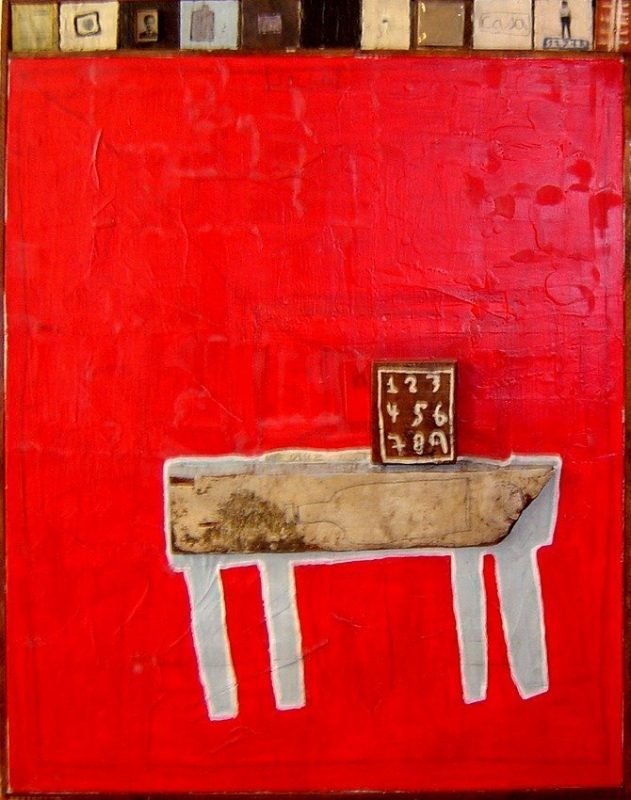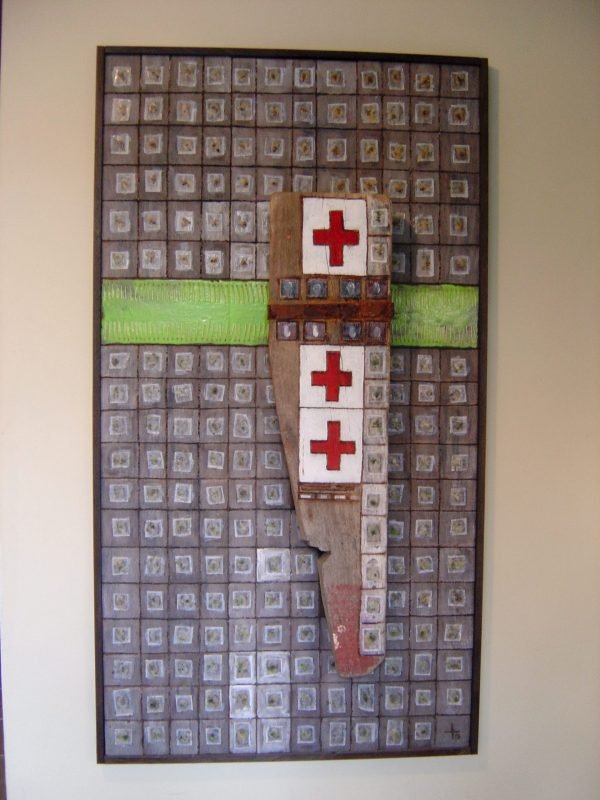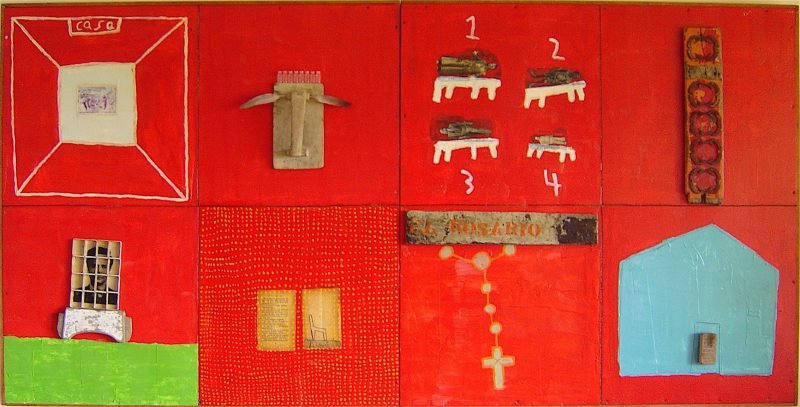CARLOS ANZOLA
1970. Caracas, Venezuela

Carlos Anzola
Excavating Silence: Carlos Anzola and the Echoes of the Past
Carlos Anzola is a Venezuelan visual artist and architect, graduated from the School of Architecture at the Universidad Central de Venezuela. With a solid academic foundation and a profound sensibility toward material culture, Anzola has forged a unique path within contemporary constructivist art. His practice revolves around the poetic reinterpretation of forgotten and discarded objects, positioning him as a creator deeply invested in the emotional and symbolic layers of timeworn materials.
Anzola’s body of work stands out for its ability to breathe new life into items marked by time—old photographs, obsolete manuals, vintage advertising posters, expired guides, rusted tools, and printed matter that once held societal relevance. These fragments of the past are not merely assembled as nostalgic memorabilia; rather, they are meticulously recontextualized, elevated through composition and metaphor, and transformed into works of art that dialogue with both personal memory and collective history.
Often described as a “recollecting artist,” Anzola’s creative process resembles an act of intimate archaeology. He rescues, reorders, and resignifies that which has been left behind, channeling a persistent search for a muse hidden within the residue of modernity. Through this process, he constructs artworks that invite contemplation on themes such as impermanence, ruin, cultural memory, and the aesthetics of decay.
Central to Anzola’s artistic inquiry is a desire to activate the viewer’s own emotional and mnemonic registers. His assemblages and interventions gently provoke reflection on the inevitable passage of time and the fragile line between remembrance and oblivion. In doing so, Anzola’s work becomes not just a recovery of objects, but a recovery of meaning—an attempt to reconstruct a narrative through absence.
His artistic language is closely aligned with the principles of Arte Povera, a movement that emerged in Italy during the 1960s as a radical gesture against the commercialization of art and the dominance of mass media imagery. Inspired by this conceptual lineage, Anzola embraces the expressive potential of humble, everyday materials. He subverts their original function, imbuing them with new poetic and symbolic dimensions through spontaneity, intuition, and craftsmanship.
Far from romanticizing the past, Anzola uses the remnants of former realities as a critical lens to explore the present. In his hands, each object becomes a vessel for memory, a fragment of a story once lived, a meditation on identity, loss, and cultural heritage. His work opens space for silence, for questions without answers, and for a quiet resistance to the accelerating erasure of time.
Carlos Anzola’s artistic practice invites us to pause, to look again at what we overlook, and to consider how the discarded can become a site of beauty, meditation, and renewal.











